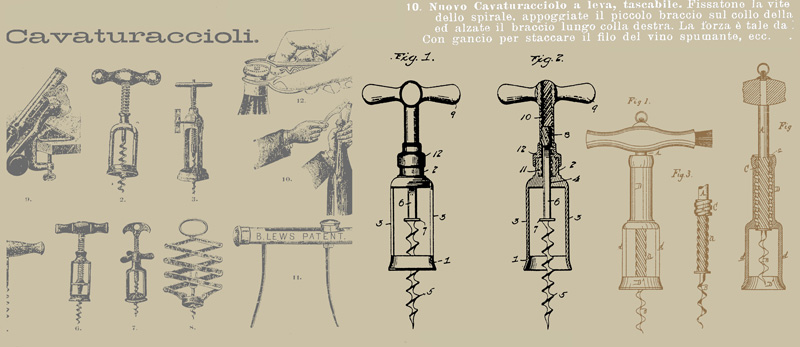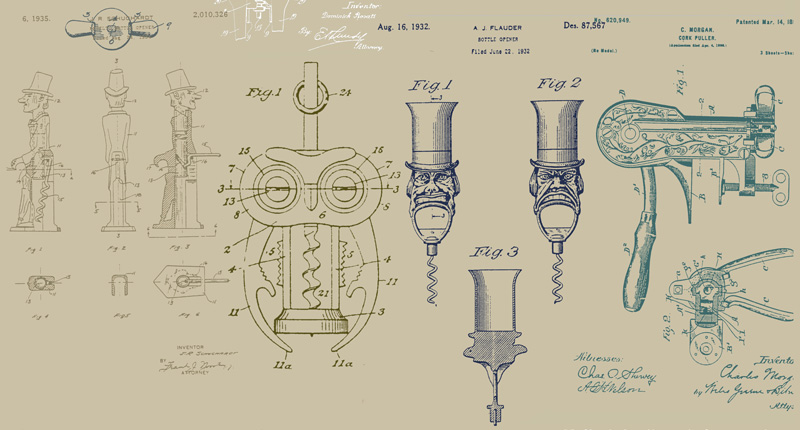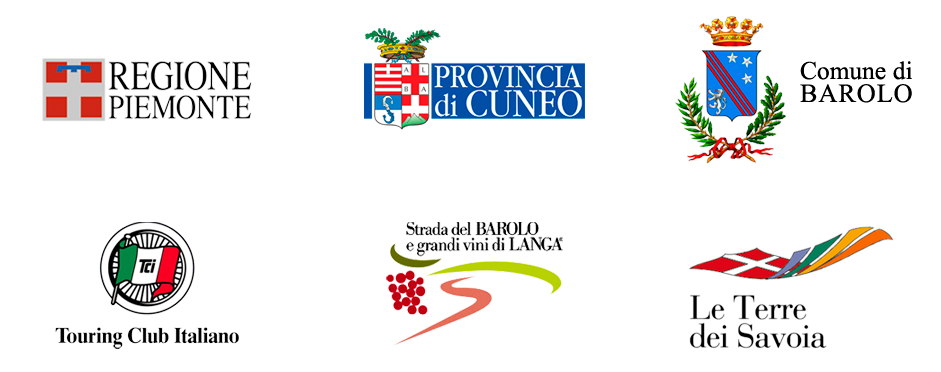HISTORY OF THE CORKSCREWS
WHEN, WHERE AND HOW WAS THE CORKSCREW INVENTED?
Uncorking a bottle is always a magical moment somehow: the eyes of the guests are concentrated on the person doing it. The foil capsule is removed and the corkscrew tip is placed in the middle of the cork. The screw sinks into the cork until it perforates it and through a final necessary pulling effort the cork comes out of the bottle with a light “cluck”. The cork is extracted and sniffed to check how it smells. The gods’ nectar is now ready to be served and tasted. We are all used to uncork bottles in this way, it is a common and spontaneous gesture that allows us to access one of our life’s pleasures.

But when did the fascinating story of the corkscrew begin? It’s not easy to answer this question, but at least two things are certain: the corkscrew was invented to extract a cork from a glass container, though not necessarily a bottle of wine, and the first corkscrew registered patent dates back to 1795 and belongs to the British Reverend Samuel Henshall. At the beginning of the 18th century glass containers were rare, fragile and costly items, without a homogeneous capacity.
In fact, selling wine in glass bottles was forbidden in Italy until 1728 for this very reason: glass blowers did not produce standard-volume bottles and fraud was a big risk.
It was on 25th May 1728 that a royal decree allowed the sale of more robust, standard-sized glass bottles made in England, known as ‘black glass’ bottles. Up until then, wine had been sold in casks and barrels, bottles and jugs being used exclusively to bring wine up from the cellars to the table. These bottles were ‘corked’ with pieces of wood wrapped in hemp or oakum to make them hermetic enough. A subsequent step was to use corks which partly stuck out of the bottle neck and were easy to remove; anyway wine was kept in bottles just for a short time – usually not longer than a few hours or a few days.

The English, with their merchant navy and their business sense, were also lovers of good wine, and they imported it mainly from Portugal and Spain, countries that also produced cork. So, glass, wine and cork were brought together: now a way to remove the cork had to be found, but what was the inspiration behind the project? The most likely theory links the invention of the corkscrew to another instrument,in use since the middle of the 17th century, the bullet-screw.Also miniature corkscrews, often made of precious materials, were apparently invented at that time to open small bottles and phials of perfumes and medicaments.
The interest for the history of this tool inspired the passion of collecting ancient corkscrews in Paolo Annoni, a pharmacist born in Turin and come to live in the Langhe area twenty years ago. After choosing for his museum a charming and fitting site, a former wine cellar with brick barrel vault ceilings, he availed himself of the inspired cooperation of the architects Danilo Manassero and Luigi Ferrando from Alba and of the cabinet-maker and restorer Massimo Ravera from Benevagienna, who helped him make his museum unique.

